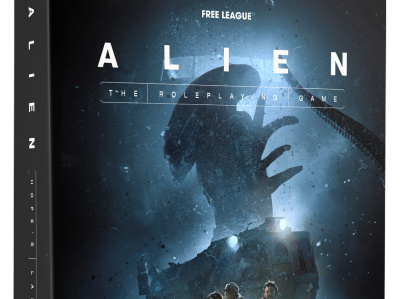 Rolling for Initiative is a weekly column by Scott Thorne, PhD, owner of Castle Perilous Games & Books in Carbondale, Illinois and instructor in marketing at Southeast Missouri State University. This week, Thorne offers a refresher on Facebook practices.
Rolling for Initiative is a weekly column by Scott Thorne, PhD, owner of Castle Perilous Games & Books in Carbondale, Illinois and instructor in marketing at Southeast Missouri State University. This week, Thorne offers a refresher on Facebook practices.Since last week I commented on why this is a good time of year to perform a SWOT analysis, this week, since I see so many businesses opting for a Facebook page instead of a website (restaurants especially, for some reason), I thought a refresher on Facebook practices could not hurt.
1. Not everyone is seeing what you post on Facebook. Because of the way Facebook has its algorithms and software set up, those who are your friends or who follow your page will only see about 15% of your posts. For example, Castle Perilous Games & Books has just over 1850 who like us (and for which we GREATLY thank you). However, any post that we make gets seen by between 200-400 of those people.
2. You determine what Facebook shows you. Not only can you set Facebook to "Get Notifications" from a page or mark them as a "close friend," which in both cases means you will get notified whenever they post, but you also determine what Facebook shows you in your news feed through what sorts of posts you "like," comment on, or share. If, for example, you regularly like photos, Facebook with recognize this and put more photos in your newsfeed. If you share links, more links will appear and so forth.
3. Facebook is not a substitute for a website. Unless you work at it really hard or are willing to pay Facebook money, your Facebook page looks the same as everyone else's page, ergo you lack a lot of flexibility in the design, certainly compared to a webpage. In addition, your Facebook page is subject to any changes that FB might want to make in the design or way that people receive your page. The only person who controls the look of your website is you.
4. Shares trump comments, comments trump likes. In the great Facebook scheme of things, "likes" are the social equivalent of a shrug of the shoulders or a smile. Since they require almost no effort to make, people can like stuff on your page with little to no commitment, essentially, on their part. Comments and shares take a bit of work as comments mean whatever you posted moved the writer enough to express their opinion on the topic, while shares mean the reader thought enough of whatever you posted to pass along to their friends. That is why shares rank above comments. If you have ever looked at sites such as Buzz Feed, Cracked, Mental Floss or Upworthy, you will note how easy the sites make it to share their content. Content shared increases the likelihood that the reader will click on the shared link, taking them back to the content’s home site (and its advertising).
5. If you ask them, they will like. Engagement rates (the likelihood that someone on your page will like, comment or share it) for the average Facebook page are notoriously low, about .2% for the average business page (For comparison, the average sports focused Facebook page has an engagement rate of about 3%, while finance hits about .7%). "Calls to action" work wonders in increasing engagement rates. In one example, Subway posted a generic photo of a beach and asked viewers to like the photo. Result, over 53,000 likes. Granted, that is still a small engagement rate, given the number of likes the Subway page has, but how many people would have liked the photo if Subway had not asked?
The opinions expressed in this column are solely those of the writer, and do not necessarily reflect the views of the editorial staff of ICv2.com.







